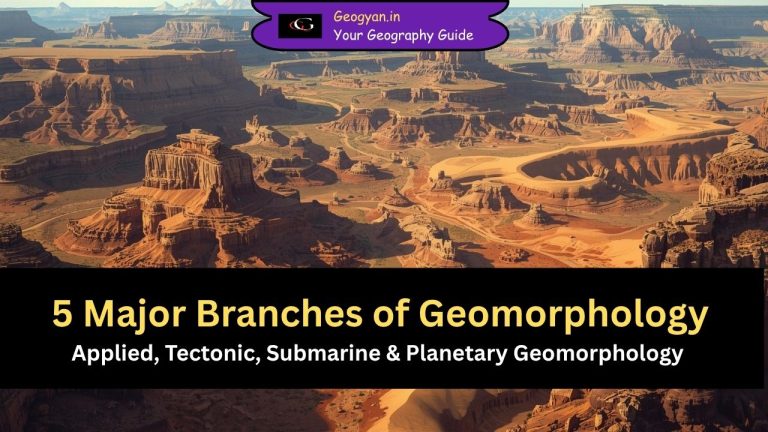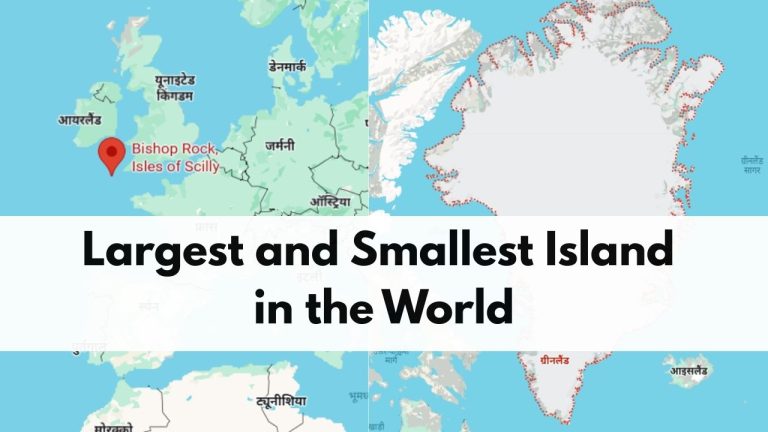Estimated reading time: 9 minutes
Table of contents
- Why is it in the News
- What is an Earthquake?
- What are the Major Causes of Earthquakes?
- Important Terms Related to Earthquakes
- How are Earthquakes Measured?
- Places Which are Highly at Risk of Earthquakes
- Which Country has Experienced the Largest Earthquake Ever Recorded?
- Can Earthquakes be Predicted?
- FAQs
- You Might Also Like
Why is it in the News
On August 31, 2025, a powerful 6.0-magnitude earthquake struck eastern Afghanistan near the Pakistan border, devastating remote mountainous areas in Kunar and Nangarhar provinces. Over 1,400 lives were lost, thousands were injured, and many mud-brick homes collapsed, complicating rescue efforts due to difficult terrain and aftershocks.
This tragic event highlights the destructive power of earthquakes and the challenges in disaster response. Let us explore earthquakes in detail.
What is an Earthquake?
An earthquake is essentially the shaking of the Earth’s surface. Imagine the ground beneath your feet suddenly vibrating or trembling. This happens because a sudden burst of energy is released deep within the Earth’s rocky outer layer, called the lithosphere, creating waves that travel through the ground.
These waves make the ground shake, which we feel as an earthquake. Earthquakes can be so tiny you don’t feel them, or they can be extremely violent, powerful enough to throw objects and people, destroy buildings, and devastate entire cities.
What are the Major Causes of Earthquakes?
The main cause of most earthquakes is the movement of large pieces of the Earth’s crust called tectonic plates.
- Tectonic Plate Movement: The Earth’s outermost layer is broken into about 7 major and 20 minor slabs, like pieces of a jigsaw puzzle, known as tectonic plates. These plates are constantly moving, floating on a layer of hot, molten rock (magma) beneath them, driven by huge convection currents. When these plates slide past each other, collide, or pull apart, they don’t always move smoothly. Instead, they can get stuck or “lock” against each other along lines called faults.
- Building Up and Releasing Stress: As the plates continue to try and move, immense pressure and strain build up in the rocks along these locked faults. Eventually, this stress becomes too great, and the rocks suddenly break or slip, releasing all that stored energy. This sudden release of energy causes the ground to shake, resulting in an earthquake. This is similar to bending a stick until it snaps—the snap is the sudden release of energy.
- Other Causes: While tectonic movement is the primary cause, earthquakes can also be triggered by other events, such as:
- Volcanic Activity: Movement of magma beneath volcanoes can cause earthquakes.
- Landslides: Large landslides can generate seismic waves.
- Human Activities: Sometimes, human actions like mining, injecting fluids underground for waste disposal (fracking), or building large reservoirs can also cause small earthquakes. For example, the 2011 Oklahoma earthquake (magnitude 5.7) is believed to have been caused by wastewater injection from oil production.
Important Terms Related to Earthquakes
Understanding earthquakes involves a few key terms:
- Hypocenter (or Focus): This is the exact point deep inside the Earth where the earthquake actually begins, where the rocks first start to rupture.
- Epicenter: This is the point on the Earth’s surface directly above the hypocenter. When you hear about an earthquake’s location, it’s usually referring to its epicenter. Tremors spread out from this point.
- Magnitude: This is a single number that describes the overall size or strength of an earthquake at its source. It tells you how much energy was released, and it’s the same number no matter where you are during the earthquake.
- Intensity: This measures how much the ground shakes and how much damage occurs at a specific location. Unlike magnitude, intensity varies from place to place. For example, a single earthquake will have one magnitude, but people closer to the epicenter will experience higher intensity shaking and damage than those farther away.
- Seismic Waves: These are the vibrations or energy waves that travel through the Earth from the earthquake’s source, causing the ground to shake. There are different types:
- P-waves (Primary waves): These are the fastest seismic waves, like a push-and-pull motion. They squeeze and expand the ground in the direction they are traveling. They arrive first, giving a brief warning before stronger shaking begins.
- S-waves (Secondary waves): These waves are slower than P-waves and shake the ground up and down or side to side. They usually cause more damage than P-waves.
- Aftershocks: These are smaller earthquakes that follow a larger main earthquake in the same area. They happen as the Earth’s crust adjusts after the main shock. Aftershocks can still cause significant damage to buildings already weakened by the main earthquake.
- Tsunami: If a large earthquake happens under the ocean, it can suddenly displace a huge volume of water, generating massive ocean waves called tsunamis. These waves can travel thousands of kilometers across the ocean and cause widespread destruction in coastal areas. Destructive tsunamis are typically caused by earthquakes of magnitude 7.5 or higher.
How are Earthquakes Measured?
Earthquakes are measured and recorded using instruments called seismographs.
- Seismographs: These instruments are installed around the world and continuously record the movement of the ground. The first such instrument, a seismoscope, was invented by Chinese philosopher Chang Heng in 132 A.D..
- Magnitude Scales:
- Richter Scale: Historically, the Richter scale was used, based on the amplitude (largest “wiggle”) of the vibrations recorded. However, for large, distant earthquakes, this method is now considered outdated.
- Moment Magnitude Scale (Mw): Today, the U.S. Geological Survey (USGS) and most seismological authorities use the Moment Magnitude Scale. This scale is more accurate as it measures the actual seismic energy released by the earthquake. For example, the 1933 Long Beach earthquake had a moment magnitude of 6.17, which means it released about 2 × 10^25 dyne-cm of seismic energy. Each whole number increase on the magnitude scale means about 32 times more energy is released.
- Intensity Scales: While magnitude describes the earthquake’s size at its source, intensity scales like the Modified Mercalli Intensity Scale describe how much shaking people feel and the observed damage at different locations. This helps understand the impact on a specific area.
Places Which are Highly at Risk of Earthquakes
Earthquakes occur primarily along the boundaries of tectonic plates where there is significant geological activity. Some of the highest-risk areas globally include:
- The Pacific Ring of Fire: This is a vast, horseshoe-shaped zone about 40,000 kilometers long around the rim of the Pacific Ocean. It’s where about 90% of the world’s earthquakes occur, including most of the largest ones. Countries within this zone include Japan, the Philippines, Indonesia, New Zealand, and parts of the Americas (like Alaska, California, Chile, and Peru).
- Himalayan Mountains: Massive earthquakes also happen along other major plate boundaries, such as the region of the Himalayan Mountains, where the Indian plate is colliding with the Eurasian plate.
- Other Regions: Many other countries and regions frequently experience earthquakes due to their location near active fault lines, including El Salvador, Mexico, Guatemala, Iran, Pakistan, the Azores (Portugal), Turkey, Greece, Italy, and Nepal. In the United States, besides Alaska and California, Hawaii, Oregon, Puerto Rico, Washington, and the entire Mississippi River Valley are also at high risk.
Which Country has Experienced the Largest Earthquake Ever Recorded?
The country that experienced the largest earthquake ever recorded was Chile.
- The 1960 Valdivia earthquake, also known as the Great Chilean Earthquake, occurred on May 22, 1960, and registered an astounding magnitude 9.5 on a seismograph. This event released approximately twice the energy of the next most powerful earthquake. This catastrophic earthquake killed 1,655 people and left 2 million homeless.
Can Earthquakes be Predicted?
This is a critical distinction in seismology:
- Earthquake Prediction (Not Possible Yet): Currently, scientists cannot predict earthquakes in terms of giving an exact date, time, and specific location for a future earthquake. Despite extensive research, there’s no reliable method to do this reproducibly.
- Earthquake Forecasting (Possible): While predicting the exact moment is not possible, scientists can forecast earthquake hazards. This means they can assess the probability of damaging earthquakes occurring in a general area over longer periods, like years or decades. For well-understood faults, they can estimate the likelihood of a segment rupturing in the coming decades.
- Earthquake Early Warning Systems (EEWS) (Currently Operational): These systems are the closest thing we have to “predicting” an earthquake in real-time. EEWS are designed to detect an earthquake that has just started and quickly issue alerts to nearby areas before the strongest shaking arrives.
- How it works: Earthquakes generate different types of seismic waves. The faster P-waves are less damaging. EEWS use sensors to detect these P-waves first and then rapidly send out warnings. Because P-waves travel faster than the more damaging S-waves and much faster than telecommunication signals, this provides a precious few seconds (from a few to tens of seconds) of warning to areas further from the epicenter.
- Examples: Such systems are operational in many countries, including Mexico (SASMEX since 1991), the United States (ShakeAlert since 2018), Japan (public alerts since 2017), and Taiwan (CWB since 2016).
India also has a regional EEWS for the Uttarakhand region, which includes a mobile app called ‘BhuDEV’ and siren units to issue alerts and notifications. This brief warning time can allow people to “Drop, Cover, and Hold On,” potentially saving lives and reducing injuries.
FAQs
Q1: What is an earthquake?
A1: An earthquake is the shaking of the Earth’s surface caused by a sudden release of energy within the Earth’s lithosphere, creating waves that travel through the ground.
Q2: What are the main causes of earthquakes?
A2: The primary cause is the movement of tectonic plates, which can get stuck along faults, building up stress that is suddenly released. Other causes include volcanic activity, landslides, and human activities like fracking.
Q3: What is the difference between hypocenter and epicenter?
A3: The hypocenter (or focus) is the exact point deep inside the Earth where an earthquake begins, while the epicenter is the point on the Earth’s surface directly above the hypocenter.
Q4: How are earthquake magnitude and intensity different?
A4: Magnitude is a single number describing the overall strength or energy released at the earthquake’s source, remaining constant regardless of location. Intensity measures how much the ground shakes and the damage caused at a specific location, varying from place to place.
Q5: What are seismic waves?
A5: Seismic waves are vibrations or energy waves that travel through the Earth from an earthquake’s source, causing the ground to shake. P-waves (primary waves) are faster and cause a push-and-pull motion, while S-waves (secondary waves) are slower and cause more damaging side-to-side or up-and-down shaking.
Q6: What is a tsunami and how is it related to earthquakes?
A6: A tsunami is a series of massive ocean waves generated when a large earthquake occurs under the ocean, displacing a huge volume of water. Destructive tsunamis are typically caused by earthquakes of magnitude 7.5 or higher.
Q7: How are earthquakes measured?
A7: Earthquakes are measured using seismographs. Magnitude is measured by scales like the Moment Magnitude Scale (Mw), which quantifies the actual seismic energy released. Intensity is measured by scales like the Modified Mercalli Intensity Scale, describing observed shaking and damage.
Q8: What is the Pacific Ring of Fire?
A8: The Pacific Ring of Fire is a vast, horseshoe-shaped zone around the Pacific Ocean where about 90% of the world’s earthquakes occur, including most of the largest ones, due to significant tectonic plate activity.
Q9: Can earthquakes be predicted?
A9: No, scientists cannot currently predict earthquakes in terms of giving an exact date, time, and specific location. However, they can forecast earthquake hazards, assessing the probability of damaging earthquakes over longer periods.
Q10: What are Earthquake Early Warning Systems (EEWS)?
A10: EEWS detect an earthquake that has just started and issue alerts to nearby areas before the strongest shaking arrives. They use sensors to detect faster P-waves and provide a few to tens of seconds of warning before the more damaging S-waves arrive, allowing people to take immediate safety actions.





























